A small yet superbly colorful bird sporting a fiery combination of orange, red, green, and purple.
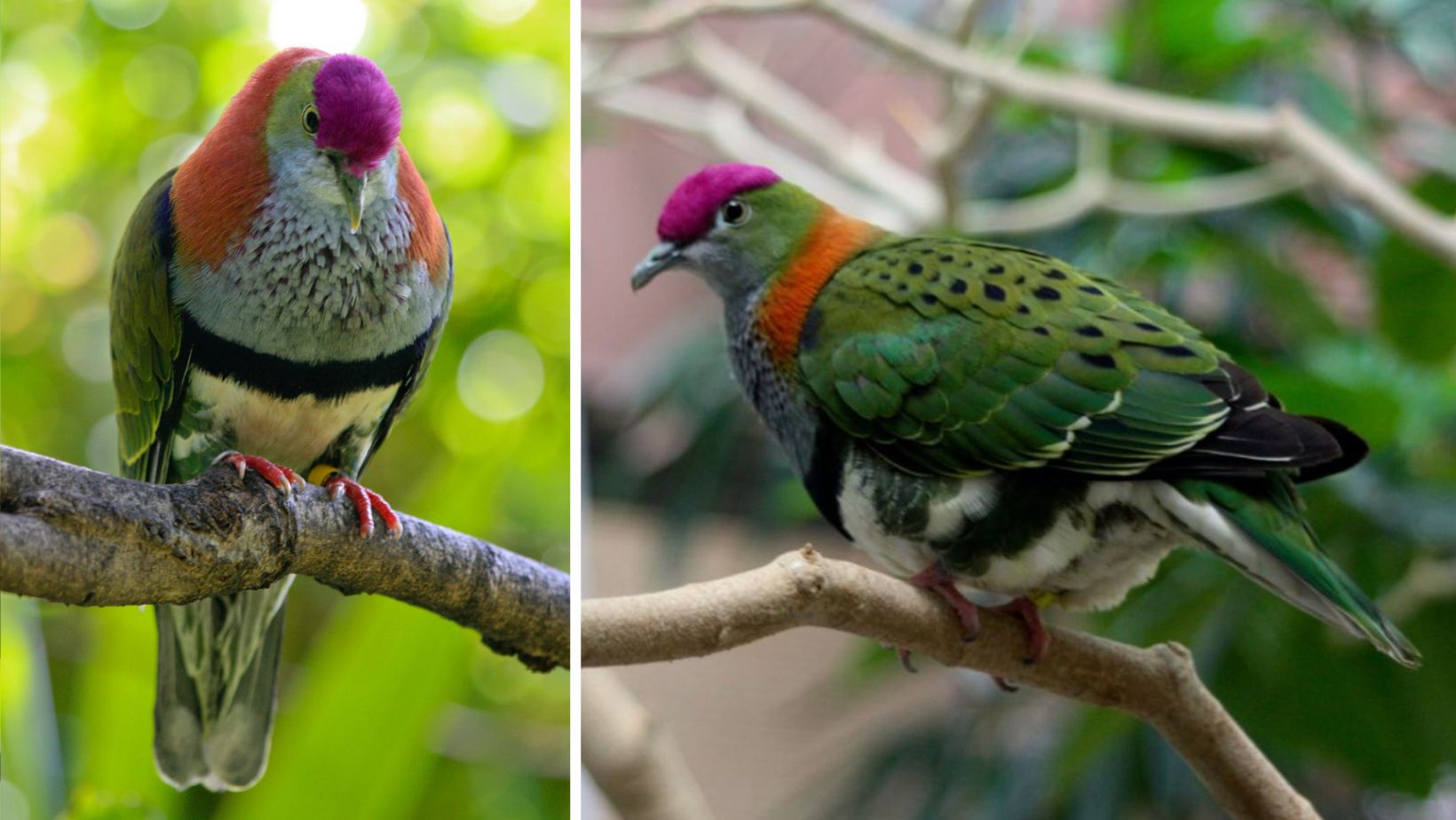
MEET THE SUPERB FRUIT DOVE
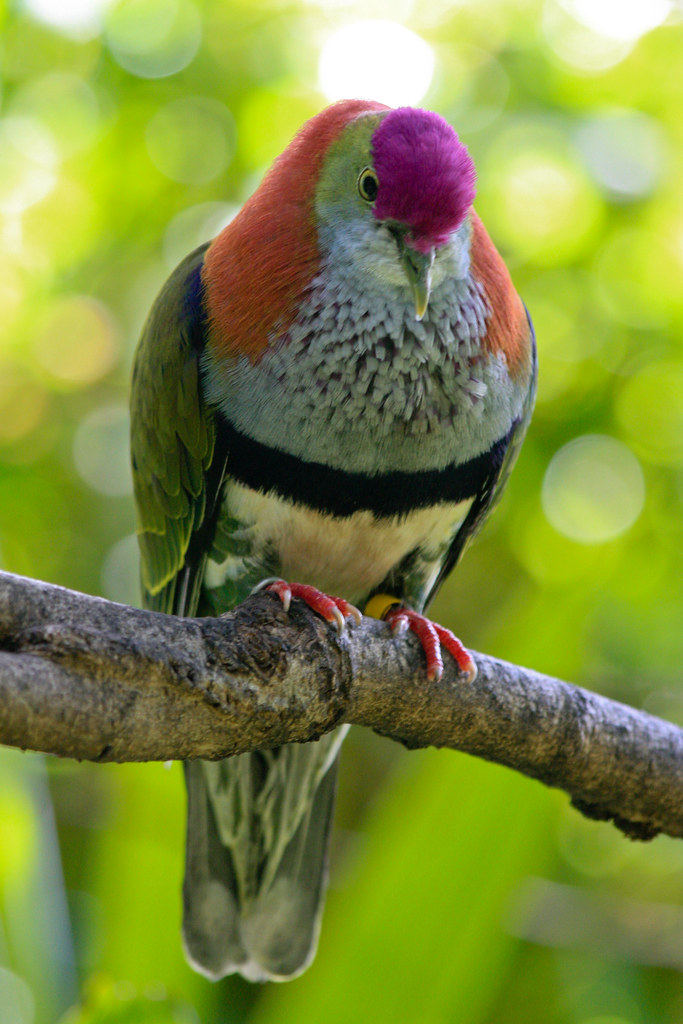
Photo Courtesy of russellstreet / CC BY-SA 2.0
The superb fruit dove (Ptilinopus superbus), also known as the purple-crowned fruit dove (leading to easy confusion with the purple-capped fruit dove), is a medium-sized, colorful fruit dove in the Columbidae family. Being a sexually dimorphic species, males as their names suggest are superbly colored, with a fiery orange nape, green ears, and purple crown. His breast is grey and divided from the abdomen by a side dark blue band. Their wings are olive green, covered with dark spots, and his tail is tipped with white.
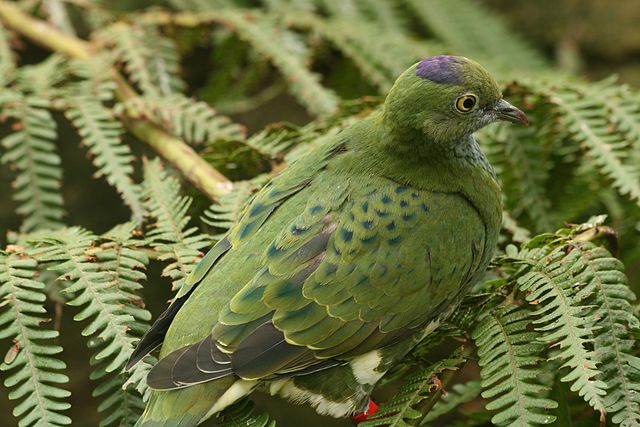
Photo Courtesy of Tobias Spaltenberger – Snowmanradio / CC BY-SA 2.0
Females of this species are mostly green, with a white abdomen, blue-tipped wings, light blue breast, and a small dark blue spot on the back of the head.
Both males and females have yellow eyes and eye-rings.
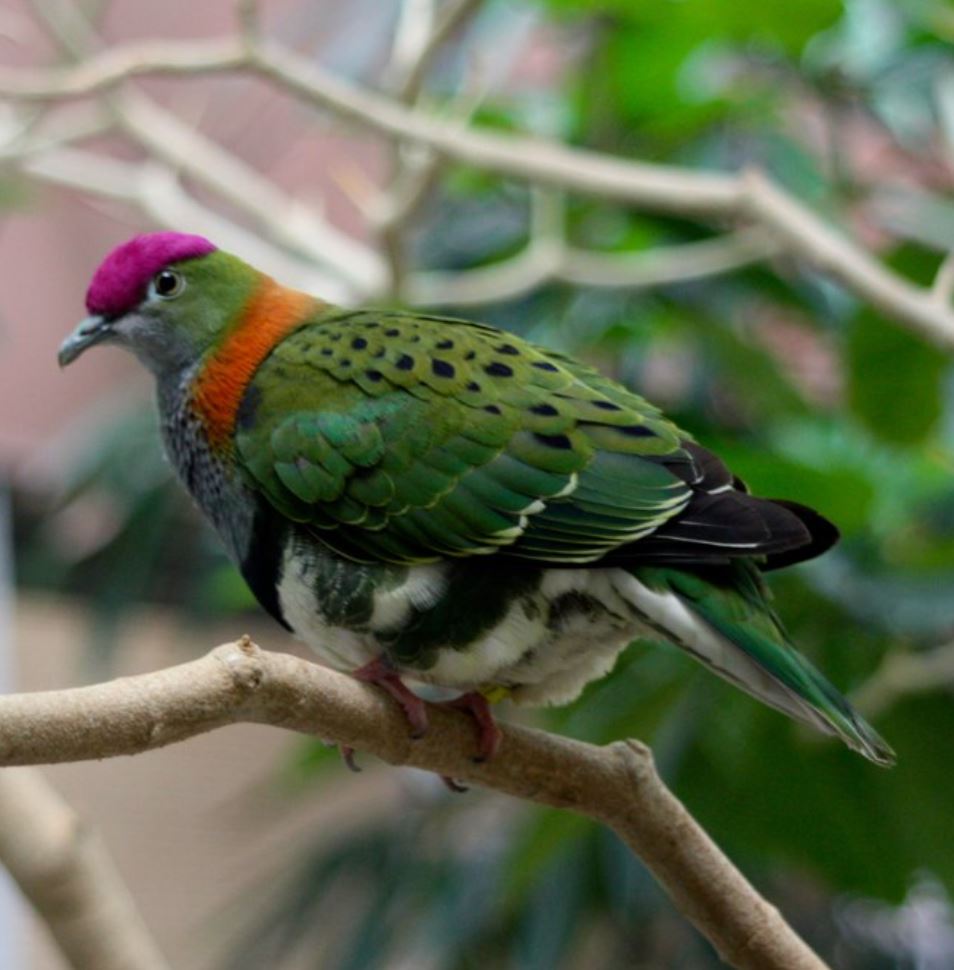
Photo Courtesy of Neil T from Bradford / CC BY-SA 2.0
Native to Australasia, the Superb Fruit Dove lives in the rainforests of New Guinea, Australia, the Solomon Islands, the Philippines, and Sulawesi of Indonesia.
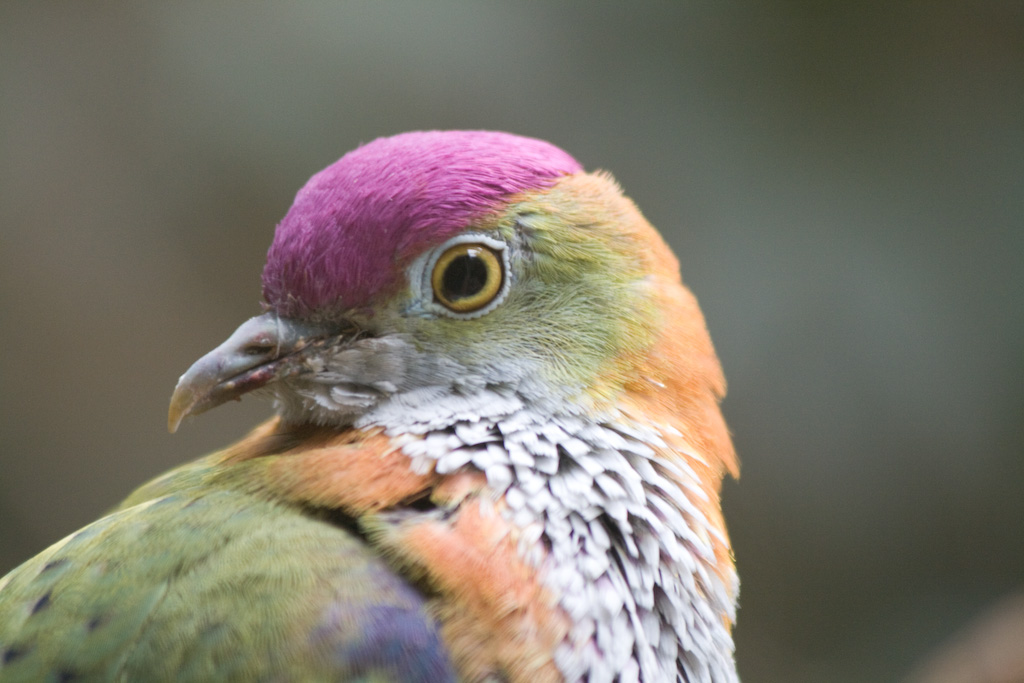
Photo Courtesy of themonnie / CC BY-SA 2.0
The superb fruit-dove likes to live in rainforested areas, along the edges of rainforests, and in mangroves, as well as alongside rivers and streams. They can also be found in plantations, and sometimes in urban gardens.
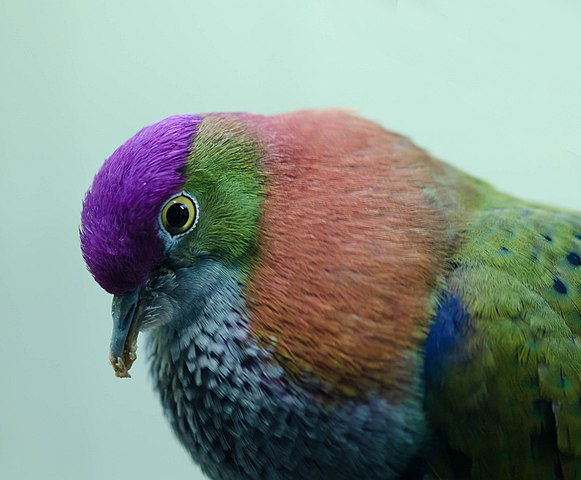
Photo Courtesy of Peter van Gessel / CC BY-SA 2.0
These birds dine primarily on fruits and berries, the bulk of which seems to be figs, mainly Ficus albipila and Ficus benjamina, Canarium australianum drupes, as well as Archontophoenix, Calamus, and Livistona palm fruit.
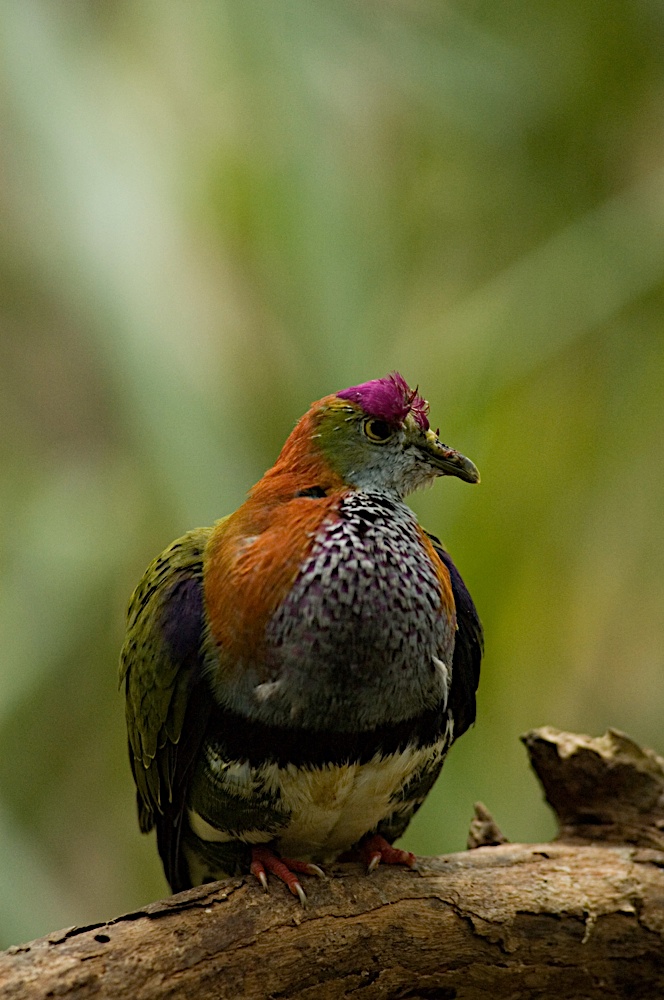
Photo Courtesy of Kosol Nou / CC BY 3.0
Superb fruit-doves breed from September through to January, when they build a flimsy nest of twigs, placed in a tree or vine around 5-30 m above the ground. The female lays 1 white egg within, which is incubated by both sexes for 14 days. The chicks are raised by both parents and fledge as early as 7 days after hatching.
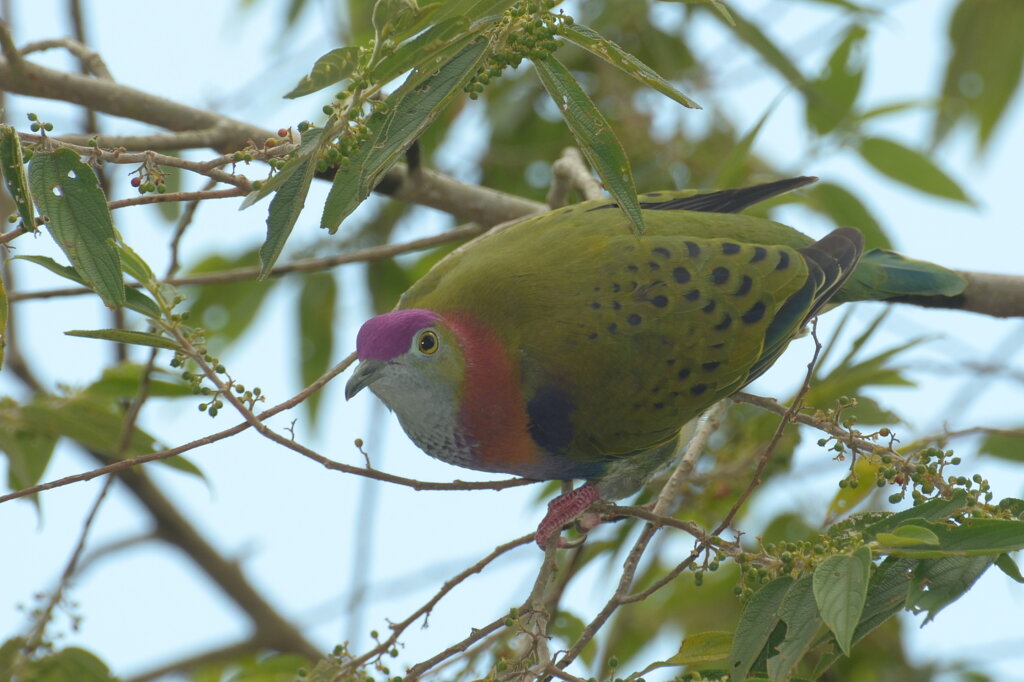
Photo Courtesy of Ariefrahman / CC BY-SA 4.0
This species has a very large breeding range and is described as common throughout most of this range.
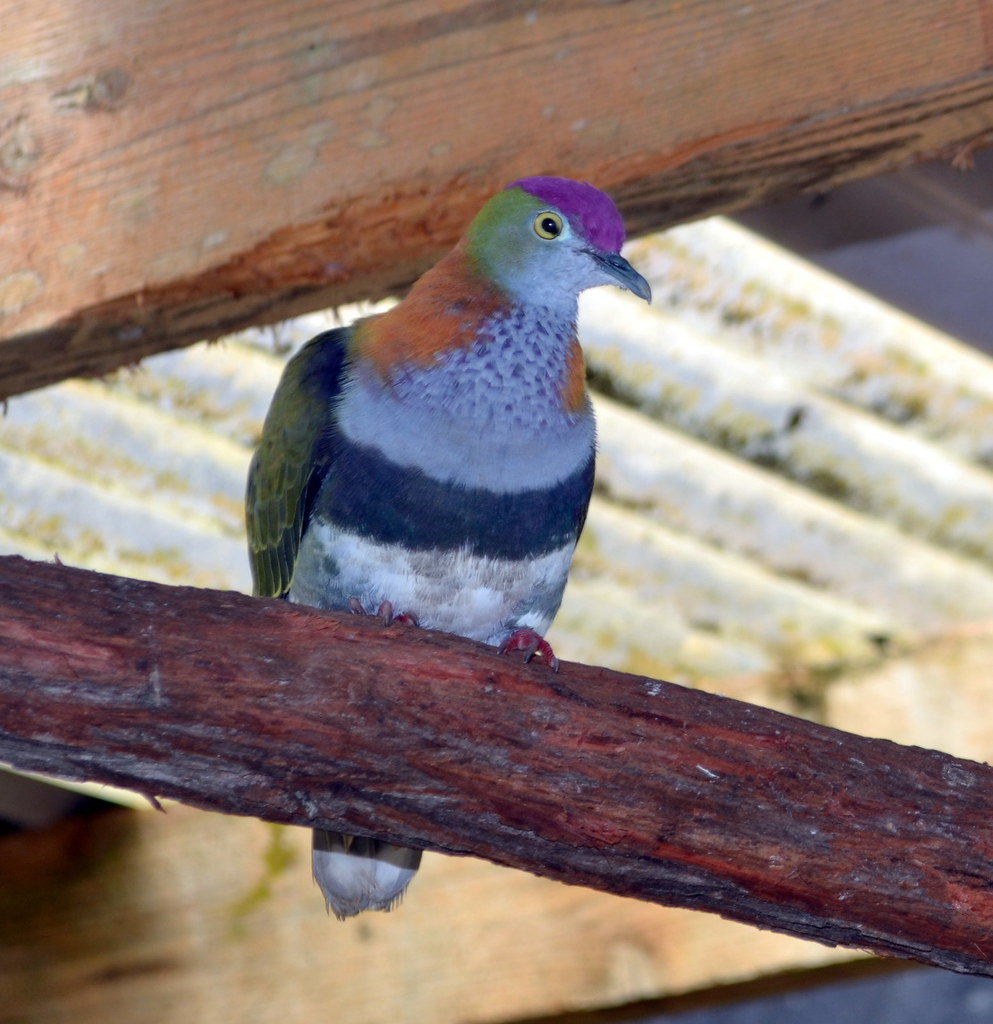
Photo Courtesy of larrywkoester / CC BY 2.0
WATCH THIS BIRD RIGHT HERE IN THE VIDEO BELOW:

